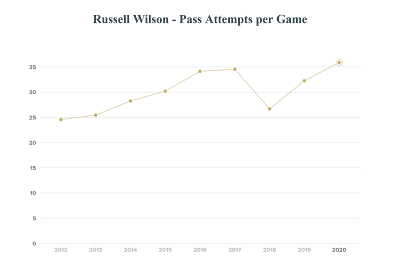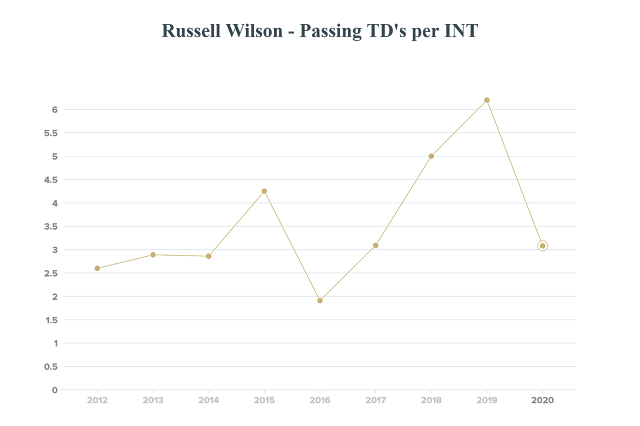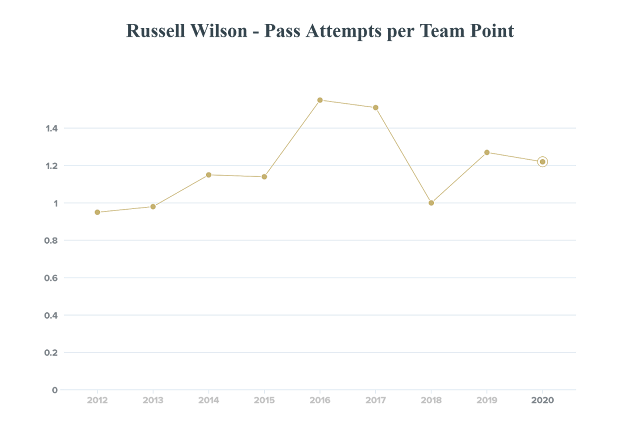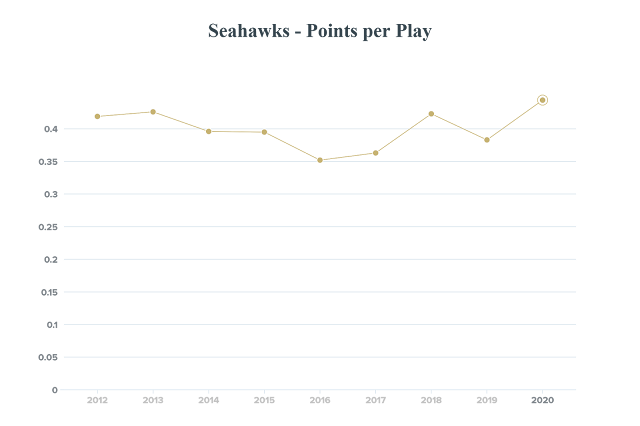The 2024 NFL Draft is in the rearview mirror.
For many NFL fans, these are the days of hope; the days when your team improved, and you are ready to compete for a Super Bowl RIGHT NOW.
For others, this is confirmation that your team sucks; that your front office needs to change, and that your coaching staff doesn't know what they are doing.
Let's recap some general takeaways from the draft, and then dive into some specifics as they pertain to the #Seahawks.
DRAFT TAKEAWAYS1.
Your team improved, but did they improve as much as everyone else?To be honest, the right question to ask after the NFL Draft is not "Did X team get better?".
The right question to ask is "Did X team improve more than the other teams improved?".
And that is a far more difficult question to answer, though the answer is far more revealing.
In my view, the teams that improved their roster more than other teams included the Cardinals, Bills, Bengals, Colts, Chargers, Rams, Eagles, Steelers, and Commanders.
The teams that improved their rosters the least (in comparison to other teams) included the Titans, Giants, Lions, and Patriots.
That doesn't mean they had "bad" drafts, but simply that the amount they improved was less than the other teams: that can create less sustainability for a playoff contender (like the Lions), or create a more difficult path to contention for already-struggling teams (like the Patriots).
2.
Your team drafted some good players, but were they as good as other players they could have drafted?Value propositions are tough to discuss well, because it causes us to second-guess ourselves and every decision we make; however, we all know that tradeoffs are real.
For example, as we'll look at later, the Seahawks drafted Byron Murphy, and thus gave up the opportunity to draft Troy Fautanu.
By doing "X", you no longer had the opportunity to do "Y".
The Eagles are masterminds of this kind of logic on draft day: somehow they drafted CB Cooper DeJean at #40 (when he was a 1st rounder on many/most draft boards), and essentially got two first-round talents this year, while still collecting extra picks in next year's draft.
The Steelers also did well this year: C Zach Frazier is likely an immediate starter, and was a borderline 1st-round pick on many/most draft boards. Pairing him with Fautanu is a huge, tangible upgrade to their offensive line.
However, our neighborhood Seahawks may represent a negative example in this scenario.
In the 4th round, they drafted ILB Tyrice Knight at #118, who was not ranked on either PFF's prospect list or Daniel Jeremiah's "Top 150" list, and was projected to go in the 6th round by Lance Zierlein.
Meanwhile, they passed on new Steelers' OG Mason McCormick (top 101 on both PFF and Jeremiah's lists, projected in the 5th by Zierlein) and new 49ers' S Malik Mustapha (top 148 on both PFF and Jeremiah's lists, projected in the 4th by Zierlein).
Will that be the right decision? Maybe, maybe not. Time will tell.
3. We will never have all the information that a GM does, but that doesn't mean they make good decisions.
Every year, the qualifier is made that "we don't have all the info" when a player falls down in the draft due to undisclosed injury or personal concerns.
And every year, GM's make fun of people who try to predict how the draft will play out or question why a GM would pick a specific player at a specific time.
That doesn't mean that general managers always make the right decisions.
We don't have to look farther than last year's first overall pick to see what we're talking about, when Bryce Young was selected ahead of CJ Stroud.
Or when Travon Walker was selected ahead of Aidan Hutchinson in 2022. Would the GM's make the same pick today?
Or when Micah Parsons went at #12 overall in 2021. Today, wouldn't San Francisco rather have selected Parsons there at their original pick selection than traded away three first round selections to move up and select Trey Lance?
Having more information does not necessarily equate to making better decisions.
SEAHAWKS DRAFT ANALYSIS
R1, #16 OVR - DL Byron Murphy II
As the Huskies fans and OL advocates sat on their couches waiting for Troy Fautanu to hear his name called on Thursday night, mixed emotions accompanied the resulting selection.
That's not to say that Murphy was the wrong choice; in fact, given how the draft panned out, this was potentially the best choice they could have made.
If, as reports say, they only way they could have received a late 2nd round pick in a trade back was to trade back to somewhere around #25, would you have done it?
Would you have said that Jordan Morgan or Graham Barton or Tyler Guyton have blue-chip potential?
In the end, Murphy is a 92nd percentile NFL athlete at DL, with an NGS score that is top-3 among all DL selected in the past three drafts, and was the top DT on most boards: this is a win-the-trenches pick.
R3, #81 OVR - OG Christian Haynes
This is the pick that almost all of those in the Seahawks' sphere can appreciate.
A true Guard that looks the part, was rated well, and is pretty favorable overall?
Not many are complaining here: a 91st percentile NFL athlete at OG, with a positive NGS score, and the 3rd overall IOL prospect per PFF.
It doesn't get much better in terms of value or need.
TRADE (#102 and #235 for #121, #136, and #207)
I felt this trade value was extremely fair, especially given how many quality prospects were left on the board (30+ in my book): it appeared that the Seahawks had a chance to do something special here and pick two solid contributors at #118 and #121, plus have better dart throws in the 5th and 6th rounds.
R4, #118 - ILB Tyrice Knight
This was disappointing.
I think I understand the pick: McDonald clearly has a preferred body type at ILB (6'0-6'2, and 227-237 lbs), and this may be the only ILB on the board who clearly fit those preferences well.
Also, this is a fourth round pick, and so reaching on this kind of a pick has a limited potential negative consequence.
Nevertheless, the Steelers selecting Mason McCormick with the next pick stung: he was a 3rd-round value on my board, and I would have loved for them to have doubled down on the trenches even further, especially since Knight would likely have been available with one of the next two pick selections.
Knight is a very good athlete (7.41 RAS), and NGS likes him as well (scoring at 71), but this was not a value pick: this was a positional need pick.
R4, #121 - TE AJ Barner
I love this player... but continue to feel like this was an average pick.
Barner is what I love to see in a quality inline TE: big frame (6'6/251), big program (Michigan), and great run-blocking grade (81.3, best in class, per PFF).
He can catch the ball, and has been targeted over 100 times in the past three collegiate seasons, so he can be used that way as well.
He ended up with a 8.70 RAS and a 67 NGS score, so he is VERY athletic and had average production.
Barner will be a player I keep my eye on.
R5, #136 - CB Nehemiah Prichett
Measuring in at 6'0/190, the next Seahawks' selection had an RAS of 7.79 and an NGS score of 72.
This is an athletic, productive corner.
Why, then, don't I like this pick at all?
First, the value vs. need conversation: I would love to have seen an entire draft focused on building the trenches, and Sedrick Van Pran, a likely starting Center, went just a few picks later.
Also, PFF ranked Pritchett as their 25th overall CB in this class, with a concerning 52.4 run support grade, ranking in the bottom tiers.
I like CB's who are physical and can hit: I'm not certain that is who Prichett is.
R6, #179 - OG Sataoa Laumea
An OT/OG out of Utah, Sataoa is a multi-year starter at Right Tackle who is probably apt to play Guard in the NFL (due to big power and slow feet, per PFF).
His measurements are good (6'4/319), and his RAS, though incomplete, would have ranked him somewhere around the 70th percentile athletically (among NFL Guards).
I really don't have a problem with this pick, though I would have preferred WR Malik Washington or DL Tyler Davis at this point.
R6, #192 - CB DJ James
This was a good value pick.
The Seahawks probably weren't targeting James at this point, since it is rare to double-dip from the same school and draft class, let alone from the same position within that context.
Most likely, James was the best player left on their board by quite a bit, and they just had to take him.
These are my favorite kind of selections, at least in concept.
He is smaller than his earlier counterpart by 15 pounds, and isn't the same tier of athlete, but was graded significantly higher in all coverage areas than Pritchett (except for completion percentage).
We will see if he beats out Pritchett on the depth charts this summer and fall, but I wouldn't be surprised.
R6, #207 - OT Michael Jerrell
Jerrell represents a complete unknown to most internet scouts, and a complete unknown to most grading systems as well; thus, we have limited info.
What data we do have comes from RAS: this is a 6'4/309 Tackle who is probably a Guard at the NFL level, and he is nearly a 93rd percentile athlete among NFL Guards.
I would have loved to have heard how Schneider came to the decision to draft this kid.
Meanwhile, I would have drafted OG Christian Mahogany from Boston College.
Who is the better selection years down the road? No one knows at this time.
CONCLUSION
Day 1 and 2 of the Seahawks' draft are being universally praised, while Day 3 is being nearly universally questioned.
I'm in alignment to a large extent.
I'm not certain that the values were there on Day 3... it appears to include multiple reaches, and possibly some fits that don't align with play style.
However, we could also learn that these players are exactly what the new head coach wants and needs on his team, and I would be happy to be wrong.
My redraft of the Seahawks draft is below, for accountability:
#16 - DL Byron Murphy
#81 - OG Christian Haynes
#118 - OG Mason McCormick
#121 - TE AJ Barner
#136 - C Sedrick Van Pran-Granger
#179 - DT Tyler Davis
#192 - CB DJ James
#207 - QB Michael Pratt













